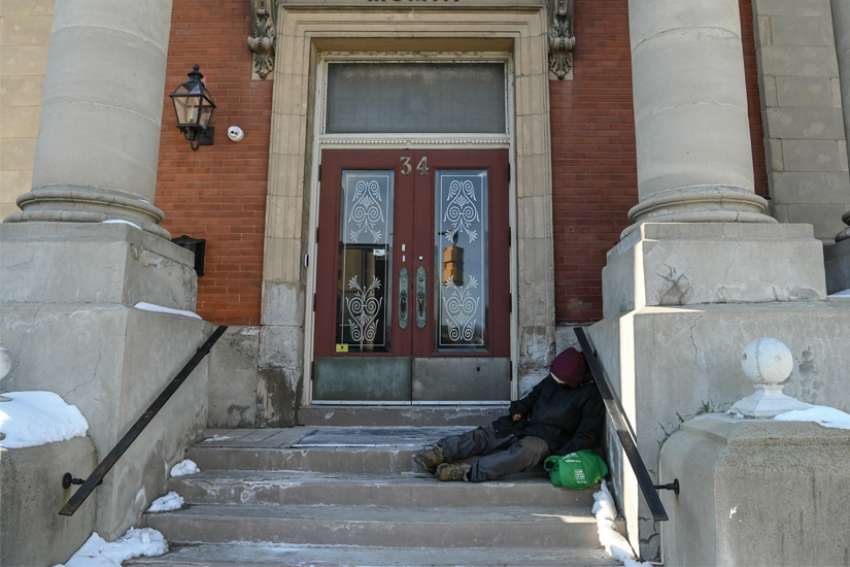“The province does not currently have a detailed plan,” reads the report into provincial housing and homelessness programs.
The FAO points out that Ontario’s five-year poverty-reduction strategy, launched just before Christmas, does not mention any additional spending or programming to tackle homelessness.
That’s shameful, said Good Shepherd executive director Br. David Lynch.
“We all have a moral responsibility. Society is judged on its ability to care for its weakest members. We all play a part in that,” Lynch said.
That the Good Shepherd’s 97 beds (pre-COVID) in downtown Toronto are full every night would be no surprise to the auditors and researchers at Ontario’s FAO, who estimate there are 16,000 homeless people in Ontario on any given night. It’s an estimate based on a 2018 enumeration of the homeless in select municipalities and other municipal numbers.
“The province does not measure or report on the number of homeless individuals or chronic homelessness,” said the FAO report.
Toronto shelter use increased 80 per cent between 2013 and 2018 and the shelter system has constantly been above 92-per-cent occupancy since 2017. Exploding shelter use in Toronto and Ottawa is driven “primarily by growth in the number of families using shelters and increases in the length of time individuals are staying in shelters,” the FAO report said.
It’s nothing new, said Lynch.
“In the 26 years I’ve been here, homelessness has increased — doubled upon doubled upon doubled — to the point that just before the pandemic hit we were overwhelmed with numbers,” he said.
In 2018-19 there were 23,300 households that successfully moved out of the shelter system and into either transitional or permanent housing. But that number is down from 30,600 in 2014-15.
The FAO argues that relying on the shelter system to fix Ontario’s housing problems is throwing money away. A single shelter bed costs the province $25,000 per year while rent subsidy equals just $6,300 per year.
A shelter system is no substitute from building and managing social housing, said Lynch.
“That’s part of the problem. We stopped building social housing in the ’90s and we’re paying a huge price for it now,” he said. “And we will continue to pay a huge price for it until we reverse out of these bad decisions.”


